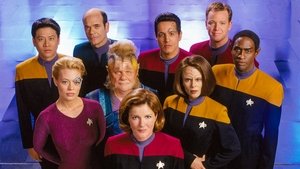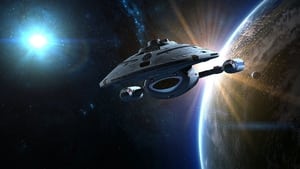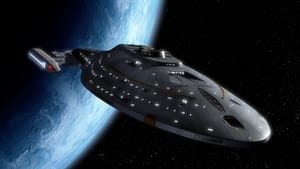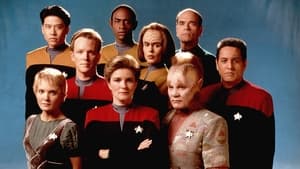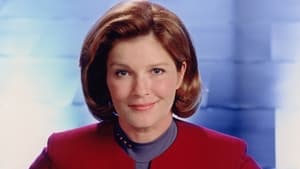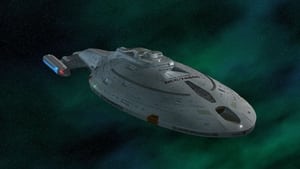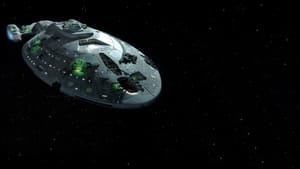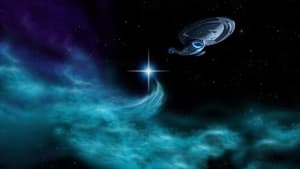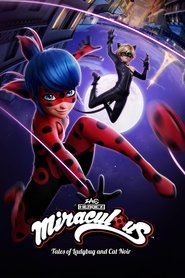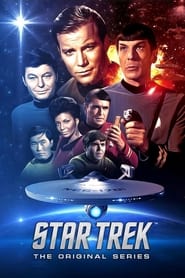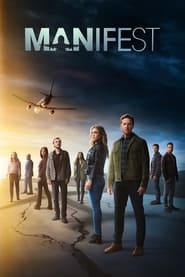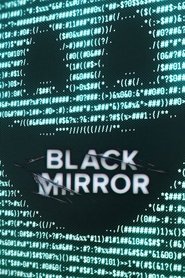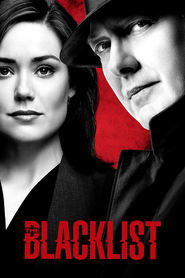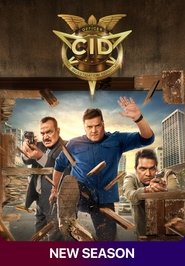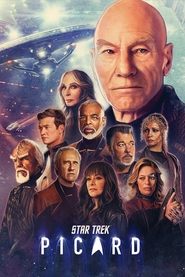
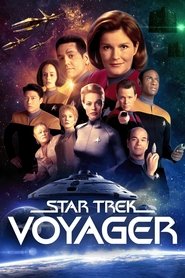
Creator
Creator
Cast
Kathryn Janeway
Chakotay
B'Elanna Torres
Tom Paris
Neelix
The Doctor
Tuvok
Seven of Nine
Harry Kim
Video trailer
Synopsis
Synopsis
Star Trek: Voyager is the fourth live-action show in the Star Trek franchise, which was first aired from 1995 to 2001. The show is under the command of Captain Kathryn Janeway, and the starship USS Voyager is trapped within the Delta Quadrant, some 70,000 light-years away from the Federation. This show chronicles the adventures of the Voyager crew in their struggle to maintain survival as well as exploration, and their need to return home, as they encounter alien species that are not familiar to them, moral dilemmas, and internal conflict throughout the lengthy journey.

Voyager starts by combining with the band of Maquis rebels, whose ships were also pulled into the Delta Quadrant. In seven seasons, the team faces problems including enemies (the Kazon, Vidiians, Hirogen), the Borg, and temporal anomalies and internal conflicts of joining with the Maquis and Starfleet crew members. The series concludes with a dramatic conclusion in which Admiral Janeway can intervene via the time machine to return Voyager home.
Voyager is notable because it was one of the very first Star Trek series with a woman serving as the starship’s captain (Kathryn Janeway) as well as for its blend of “lost-in-space” long-distance narrative as well as the traditional serialized Star Trek storytelling, and for the introduction of the character Seven of Nine an ex- Borg drone who is central to the identity of the show.
Quick Show Information
| Property | Detail |
|---|---|
| Title | Star Trek: Voyager |
| Original Run | 1995 – 2001 |
| Seasons | 7 seasons |
| Episodes | About 171 shows (plus the two-part series) |
| Runtime per Episode | 44 minutes (TV-PG) |
| Creators / Producers | Created by Rick Berman and Michael Piller (as part of Paramount UPN). UPN) |
| Location or Setting | Delta Quadrant, deep space, starship environments |
| Main Highlights of the Cast | Kate Mulgrew (Janeway), Robert Beltran (Chakotay), Roxann Dawson (B’Elanna Torres), Robert Duncan McNeill (Tom Paris), Ethan Phillips (Neelix), Tim Russ (Tuvok), Jeri Ryan (Seven of Nine) |
| Rotten Tomatoes Rating | ~76-77% (Tomatometer) |
| IMDb Rating | ~7.9/10 for the entire series |
Voyager has been made available to a variety of markets via streaming services that feature Star Trek content (e.g., Paramount+, etc. ) and is highly loved by many fans, despite occasional criticism.
Plot Summary
Since Voyager can be described as an ongoing TV show instead of a single narrative film, its “plot summary” must reflect the premise as well as key plot arcs throughout seasons. Below is a detailed overview of key plot arcs and important milestones.
Pilot / Premise (“Caretaker”)
In the pilot with two parts, Caretaker, Voyager is pursuing a Maquis rebel ship to save it. The ship is traveling through the Badlands, in which both Voyager and the Maquis ship are kidnapped by an alien being called The Caretaker, who has dragged 70,000 light-years in the Delta Quadrant. The Caretaker oversees an array that supports an alien race called the Ocampa and forcefully abducts species in search of an appropriate successor. Janeway must decide if she wants to go home or defend the Ocampa from an invading species, called Kazon Kazon, who are determined to take over the array. Janeway takes down the array to prevent it from being taken into Kazon hands, which means that Voyager is left stranded on the prospect of a 75-year return journey. Voyager and Maquis crews are merged. Voyager, along with the Maquis crews, is combined to form one vessel.
The Early seasons: Survival, Encounters & Integration of Crew
In the first and second seasons, the crew is battling for the issue of survival, the scarcity of resources, threats from aliens, internal conflicts, and the dynamic within Starfleet, as well as the Maquis crews. Voyagers travel to several planets, encounter species like the Kazon as well as the Vidiians (a species plagued by a deadly disease), and deal with moral issues. The Doctor, initially an emergency medical hologram for short-term use, has become a permanent medical chief because of the absence of a human doctor. Kes (an Ocampa) and Neelix (a Talaxian) become part of the team.
Mid-Seasons The Borg Temporal Anomalies, & Important Episodes
From season 3 onwards, Voyager faces the Borg as one of the franchise’s most formidable enemies. In season 3, the 2-parter Scorpion begins an alliance that is forced by the Borg to take on Species 8472. The season 4 Year of Hell is a storyline that tests the endurance of the crew. In seasons 5 and 6, Voyager establishes communication with the Alpha Quadrant via the Pathfinder Project that is spearheaded by Reginald Barclay. The arrival of Seven of Nine from the Borg group in season 4 is an important turning point. She slowly regains her humanity under Janeway’s direction. The Doctor is granted an emitter that is mobile, which allows him to leave the sickbay and take part in the ship’s life.
Noteworthy episodes: Timeless (season 5) is a futuristic version of Voyager frozen in ice triggered by a slipstream accident and a plot to relay a warning to the past to avoid disaster. The Void (season 7) is a strong thematic episode in which Voyager, as well as other ships, collaborate to stay alive in an undefined region.
Final Season and Endgame ( Endgame)
The seventh episode of the series sees the team move towards home. The conclusion of Endgame is a story of Admiral Janeway from the future who is interfering by stealing a time-travel device to re-experience Voyager from the distant past, and return the ship to its home through Borg transwarp corridors, thus cutting down the 75-year journey. In the epilogue, Janeway is now an admiral and considers the costs, loss, and emotional burdens that came with the trip.
So, Voyager completes its journey -not by waiting, but with active involvement and sacrifice.
Themes and Analyses
Star Trek: Voyager weaves together a variety of themes, some that are common with those of the Star Trek universe, others more specific to the “lost inside the Delta Quadrant” premise.
Home, longing, and the Journey
Its core idea is nostos (the Greek idea of returning home). The crew is far away from their homeland, so the quest to get back becomes the primary plot. The choices they make are influenced by the conflict between the desire to return and the moral obligations they face during the journey.
Integration, Unity, and Cultural Conflict
Voyager is a combination of two groups (Starfleet as well as Maquis) with distinct backgrounds and ideologies. The show focuses on how differing opinions (in the command structure, ethics, and character) have to be reconciled. Janeway’s role as a unifier as well as moral leader is crucial.
Ethics, Sacrifice, and Responsibility
Janeway frequently faces a dilemma: safeguard alien worlds, or speed home, or uphold Starfleet values under pressure. Some of the most challenging episodes put the crew in moral gray zones. The show is constantly testing the limits of morality in extreme situations.
Identity and Transformation
Characters are constantly evolving in Seven of Nine’s transformation into her own persona, B’Elanna’s struggle in the Klingon and human counterparts, the Doctor’s path to personal identity, and Chakotay’s leadership struggles. Change and identity are frequent themes.
Hope, Isolation & Resilience
Voyager’s isolation no Starfleet support, a hostile quadrant, limited resources forces resilience. The crew is optimistic even when faced with adversity. The show focuses on how communities cope with lengthy, uncertain trials.
Technology, Ethics, and the Prime Directive
Like other episodes of Trek shows, the show grapples with complying with the Prime Directive (noninterference). In certain episodes, the presence of Voyager, requirements for resources, or even actions impact Delta Quadrant civilizations. Fans and critics argue over whether Voyager is ever truly a true adherence to its commitment to the Prime Directive — for example, the impact on planet rings or disruptions to civilizations is the focus of a recent academic simulation.
Growth, forgiveness, and Redemption
A number of characters have imperfections or traumas. The Maquis, who was a violent criminal and raged at B’Elanna and Seven’s assimilation and Janeway’s burden of command. Voyager’s story allows redemption and growth through arcs.
Fate, Time & Consequences
Voyager includes temporal arcs (time travel, causality, future versions). Timeless as well as Endgame particularly deal with the consequences of actions that occur across time. The story asks, can the fate of mankind be altered?
From a perspective of franchises, Voyager illustrates the way in which Trek’s aspirational ethos changes with changing conditions and tests whether the persistence of the ideals of the franchise can last.
Controversy and Criticism
Although Voyager remains adored, it is not without its critics and controversy. These are the most important issues:
Uneven Writing and “Up to the Ante” Syndrome
Voyager often relied on the spectacle of the show, moral high ground, or plot efficiency over internal coherence. Some viewers criticize episodes due to inconsistencies in tone or logic, particularly in later seasons.
“Threeshold” Episode “Threshold” Episode
A famous episode, The Threshold (season two), the plot involves Tom Paris breaking warp 10 and then transforming into a lizard, and then mating with Janeway and spawning salamander offspring. It’s an odd plot that attracted much adulation and ridicule. The episode has turned into an internet meme and is a source of irony for the fans in the form of “Threshold Day.”
Characters Underuse / Continuity Struggles
Certain characters (e.g., Neelix, Kes) fade or leave the show without completing stories. Kes quits the show mid-way through the series. The Maqus crew’s integration often seems superficial, with the less prominent crew members being marginalized.
Janeway as Perfect Captain Critique
Janeway is often accused of being too perfect, or even moralistic, and lacking in internal imperfections. Many fans believed she was a fictional ideal instead of the flawed hero she was.
CGI Special Effects Limitations
Voyager’s CGI was a game-changer for the time, particularly in the later seasons. However, early seasons had only limited effects. Some viewers believe certain scenes are dated.
Sound and Identity of Series
Voyager traverses the gap between episodic Trek tradition and serialized stories. There are some who argue that it doesn’t fully commit to the story, resulting in tension between self-contained narratives and long-term growth.
Prime Directive and Ethics Inconsistency
Certain episodes depict Voyager interfering with local conflict or ecosystems, which is breaking Prime Directive ethics. Researchers simulate Voyager’s orbital interactions that affect planetary rings, suggesting the possibility of unintentional harm to civilizations.
However, despite these criticisms, fans frequently see Voyager’s strengths, ambition, character, and hope as overshadowing the shortcomings.
Cinematography and Style
Although it’s a TV show more than a feature film, the show’s visual aesthetics, cinematography, and production design are worthy of an analysis.
Visual Aesthetics & Set Design
Voyager’s sets mix practical Starfleet design (corridors, bridges, and engineering) with a variety of exotic and alien places. The interiors of the ship are in line with the Trek visual language, modular screens, corridors, and lighting. The alien world sets have more variety with striking designs, textures on the planet’s surface, and alien structures.
Camera & Framing
The majority of episodes use a mixture of static images, crane/pan moves, and medium-sized close-ups of conflicts or emotional scenes. Bridge sequences usually concentrate on compositional ensembles, with camera movements that highlight various characters. Images of ships from the outside (in space) employ CGI models.
Effects and CGI Integration
In the early seasons, Voyager relied on model shots as well as limited CGI. In time, CGI improved, with flying bys of planets, space sequences, Warp effects, as well as the alien landscapes getting more refined. A lot of fans are pleased with the way Voyager’s CGI is able to stand up to a television production from the 1990s and 2000s. Later on, the use of complete CGI exterior shots became the norm.
Editing and Pacing
Voyager episodes usually blend plot progression as well as character moments and action. Editing handles the transitions between different stories (A/B storylines). When there are episodes that have complicated arcs or time travel (e.g., The Timeless), editing is a crucial element in weaving threads of time.
Lighting, Color, and Mood
Lighting choices help set the tone: alien worlds may have unusual color palettes, eerie ambient lighting, and shadows. The ship’s lighting is more well-balanced. The Mood Scenes–temporal distortions and anomalies–use high contrast, filters, blurring of the lens, fog, as well as color shifting.
Symbolic and Visual Motifs
Common visual patterns help to create the following themes:
- Star trails, warp streaks, and subspace distortions to indicate journey and distance.
- Time distortions, overlays, and time echoes in shows that touch time.
- Shields corridors, bulkheads to represent barriers, and as a means of isolation.
- Alien architecture in hostile territory to strengthen the “unknown frontier.”
Voyager’s style reflects the Trek vision of futuristic but practical, creative yet grounded, and balancing spectacle with the human scale.
Cultural Impact
Star Trek: Voyager has had a long-lasting influence on the fields of science fiction works, the feminist media debate, as well as fandom and Star Trek lore.
Women in Command and Representation
Janeway became the first woman captain in an episode of the Trek series. Janeway’s position set the standard for gender in leadership roles in sci-fi and inspired many viewers. Janeway’s role as a morally confident, strong female commander is frequently mentioned in discussions about representation.
Fan Fandom & Legacy
Voyager has a loyal fan base. Many of them frequently rewatch and make fan theories, and praise its episodes (even the ones that have flaws). Reddit threads constantly discuss its strengths and flaws. The finale’s final moments are often described as emotionally significant.
“Threshold Day” is a yearly tongue-in-cheek celebration that highlights one of the most bizarre Voyager episodes, which is adored by fans for its wackiness.
The influence on Later Star Trek Works
Voyager is linked to the latest Trek series. For instance, Lower Decks season 4 brings back U.S.S. Voyager as animated. Star Trek: Prodigy is promoted as a Voyager sequel that includes characters such as Janeway, Seven, and the Voyager’s Crew, the legacy.
Voyager’s story of the journey home and the characters (like Seven of Nine) continue to be a part of Trek’s canon. Trek canon.
Critical Reassessment and Rankings
In its initial days, Voyager drew mixed critical reviews. As time passed, and especially following the introduction of Seven of Nine, its popularity grew. In terms of rankings, Voyager is often placed in the middle of the Trek series, more powerful than others, and less complicated than others, yet loved for its strengths.
Some have praised Voyager for its positive voice, character arcs, and the faithful re-creation of Trek values, which distinguish it as a classic, although it’s not the most innovative series.
Scholarly & Ethical Critiques
As I mentioned before, studies in the academic field, like the simulation of the impact of rings, examine the real effects of Voyager’s existence within its story universe. Discussions on The Prime Directive in Voyager’s story, the colonial ethic, and its presence in alien societies are ongoing in the sci-fi literature.
Voyager’s role as a lonely spaceship navigating a long distance affects how the stories of later science fiction novels address the issues of resource limitations, isolation, or identity issues, as well as long-haul missions.
Where to watch the Guts?
If you mean by “Where can I Watch (Guts? )” you’re referring to a place you can legally stream or watch Star Trek: Voyager, here are some of the major platforms:
- Paramount+ or CBS All Access (in many regions) – in the Star Trek catalog.
- Netflix is available in many markets around the world. Voyager is available on Netflix (depending on the region).
- DVD/Blu-ray Collections the complete box sets, series, as well as Remastered editions.
- Local Broadcast/Cable Channels. In some areas, Sci-Fi/space channels replay Voyager episodes.
- Digital Purchase or Rental platforms like iTunes, Amazon, and Google Play could provide seasons or even episodes if licensing permits.
Since availability is contingent on your location (e.g., Pakistan), I can determine which streaming platforms offer Voyager in your region.
Frequently Answered Questions
- What is the distance to Voyager from home? And what time is it going to take?
The spacecraft is approximately 70,000 light-years away from Federation space and could require a maximum of 75 years to warp at ideal conditions. - What made Voyager join forces with the Maquis team?
Since both the Voyager and Maquis ships were dragged towards the Delta Quadrant by the Caretaker, integration was essential to survive and ensure crew cohesion. - Who do you think is Seven of Nine, and why is she so important?
Seven of Nine is an ex-Borg drone who was assimilated by the Borg when she was a child. She is released and is accepted into Voyager, but over time, she is restored to her humanity. She is a central character in several plots and is also credited with increasing the popularity of the show. - What are the most popular episodes?
Episodes that are often described as standout: Year of Hell, Timeless, The Void, Shockwave, Scorpion (two-parter), Endgame. - Does Voyager contravene the Prime Directive?
Some shows show inconsistent use of noninterference rules. Certain storylines have been criticized by scholars (e.g., the influence of planets on resource use).
Conclusion
Star Trek: Voyager is a frenzied but often misunderstood and long-lasting installment in the Star Trek franchise. The fact that it is away from home creates certain limitations, which enabled the writers to investigate themes such as separation, identity, as well as survival and the moral courage required in a foreign land. The show’s strengths are in the characters – Janeway’s leadership and Seven’s transformation, the group’s unity, and also its optimistic, hopeful idea of perseverance in the face of hardship.
Although it was sometimes criticized for its uneven programming, a few instances of absurdity (e.g., Threshold) as well as the difficulty of balancing serialized and episodic storytelling, Voyager nonetheless achieved its goal of creating its own path. Its dramatic payoff in the final episode is a powerful emotional experience, and many viewers remember its journey with love, acceptance of its flaws, and pride in its goals.
Voyager provides proof that Star Trek stories can evolve and the fact that women’s leadership within sci-fi shows is crucial, as well as that the process itself, with all its challenges and discoveries, is as important as the endpoint.
Original title Star Trek: Voyager
TMDb Rating 7.8 1,012 votes
First air date Jan. 16, 1995
Last air date May. 23, 2001
Seasons 7
Episodes 169
Average Duration 45 minutes











